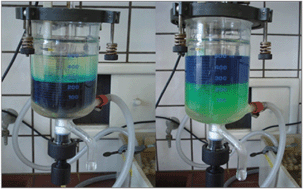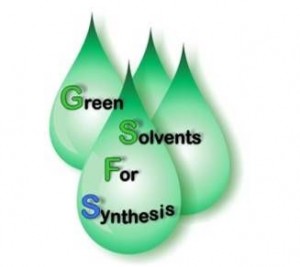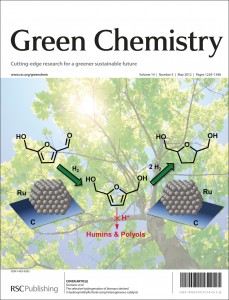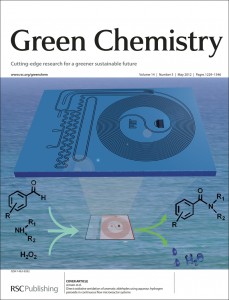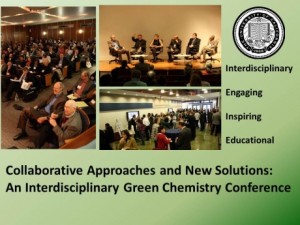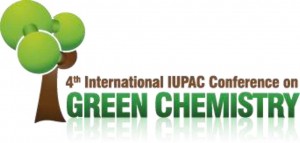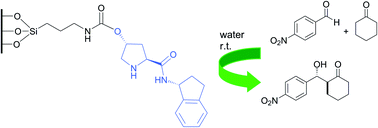This month sees the following articles in Green Chemistry that are in the top ten most accessed:-
Cellulose nanowhisker aerogels
Lindy Heath and Wim Thielemans
Green Chem., 2010,12, 1448-1453, DOI: 10.1039/C0GC00035C
One-pot conversion of CO2 and glycerol to value-added products using propylene oxide as the coupling agent
Jun Ma, Jinliang Song, Huizhen Liu, Jinli Liu, Zhaofu Zhang, Tao Jiang, Honglei Fan and Buxing Han
Green Chem., 2012, Advance Article, DOI: 10.1039/C2GC35150A
Catalytic conversion of biomass using solvents derived from lignin
Pooya Azadi, Ronald Carrasquillo-Flores, Yomaira J. Pagán-Torres, Elif I. Gürbüz, Ramin Farnood and James A. Dumesic
Green Chem., 2012, Advance Article, DOI: 10.1039/C2GC35203F
A direct synthesis of 5-alkoxymethylfurfural ethers from fructose via sulfonic acid-functionalized ionic liquids
George A. Kraus and Tezcan Guney
Green Chem., 2012, Advance Article, DOI: 10.1039/C2GC35175G
A one-pot hydrothermal synthesis of sulfur and nitrogen doped carbon aerogels with enhanced electrocatalytic activity in the oxygen reduction reaction
Stephanie-Angelika Wohlgemuth, Robin Jeremy White, Marc-Georg Willinger, Maria-Magdalena Titirici and Markus Antonietti
Green Chem., 2012,14, 1515-1523, DOI: 10.1039/C2GC35309A
Highly-efficient conversion of glycerol to solketal over heterogeneous Lewis acid catalysts
Li Li, Tamás I. Korányi, Bert F. Sels and Paolo P. Pescarmona
Green Chem., 2012, Advance Article, DOI: 10.1039/C2GC16619D
Transition metal based catalysts in the aerobic oxidation of alcohols
Camilla Parmeggiani and Francesca Cardona
Green Chem., 2012, 14, 547-564, DOI: 10.1039/C2GC16344F
TBD catalysis with dimethyl carbonate: a fruitful and sustainable alliance
Hatice Mutlu, Johal Ruiz, Susanne C. Solleder and Michael A. R. Meier
Green Chem., 2012, Advance Article, DOI: 10.1039/C2GC35191A
Solvent- and catalyst-free synthesis of new hydroxylated trisubstituted pyridines under microwave irradiation
Guodong Yin, Qiong Liu, Junrui Ma and Nengfang She
Green Chem., 2012, Advance Article, DOI: 10.1039/C2GC35243E
Hydrolysis of chitosan to yield levulinic acid and 5-hydroxymethylfurfural in water under microwave irradiation
Khaled W. Omari, Jessica E. Besaw and Francesca M. Kerton
Green Chem., 2012,14, 1480-1487, DOI: 10.1039/C2GC35048C
Why not take a look at the articles today and blog your thoughts and comments below.
Fancy submitting an article to Green Chemistry? Then why not submit to us today or alternatively email us your suggestions.












